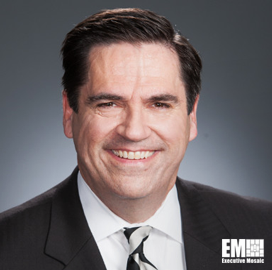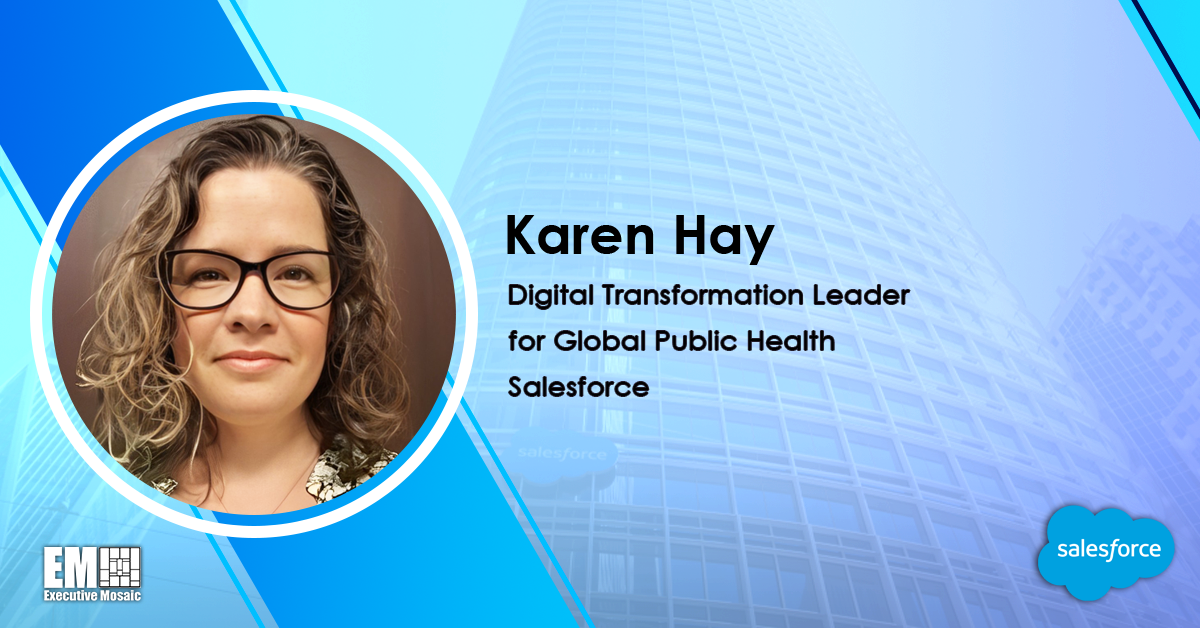Robert Carey, president of Cloudera Government Solutions Inc., recently spoke with GovCon Wire regarding his new role with the company, the challenges Cloudera solves for federal customers, as well as how the company will grow moving into 2021 and beyond.
Most importantly, Rob highlighted Cloudera’s focus on helping agencies manage and understand data to increase speed and efficiency of decision-making.
“Legacy data is one of the biggest challenges that exist out there, specifically trying to figure out how to manage and use legacy data to transform an agency and its mission. Cloudera has tools that really do enable shortening that life cycle to enable digital transformation. We turn data into useful information.”
GovCon Wire: You recently joined Cloudera this past month. What led you to this company and position?
“This was an opportunity to lead change in a different information technology strata. The Government’s journey to the cloud as a platform is underway, and requires careful data migration to support Department and Agency digital transformation and mission. I was drawn to Cloudera because of the big opportunity to help the government wade through an unsolved problem: what to do with the legacy data and applications, then transform it in a way that can be useful to render decisions in a timely and actionable manner.
When I was CIO for the Department of the Navy, we had begun the journey of understating the strategic importance of data, access to it, what was considered authoritative data and its accuracy. Often we had to find the ‘data needle’ in the ‘data haystack,’ which could prove very difficult. When I saw Cloudera, and the tools that now exist, I thought this could be a really fun opportunity to manage that larger transformation of the platform (the network and its essential elements: data) that is the basis of making nearly all decisions.
The network is the mission. So, enabling more efficient handling of data aids the fundamentals of digital transformation of federal agencies. If you’re enabling the network to be faster to support more informed decision making, you’re enabling the agency’s mission to respond faster and better than it has in the past.
Cloudera offered me the opportunity to lead a team to do that. We are very committed to the mission of Government. We’re also willing to take calculated risks in the IT space to drive technology and tackle large problems.” As a CIO, you’re charged with transforming the IT infrastructure and keeping it agile to support quicker decision making; Cloudera tools can do just that.”
GovCon Wire: What are some of the challenges the federal government faces with data?
“There are problems in the scope and scale of legacy data, its security and accessibility and there are problems identifying accurate data upon which to make decisions. There’s problems deciding what to move to either private or public cloud, and lastly creating and delivering platforms for end-to-end data management. Lastly, there are still challenges moving legacy systems/data into a modern decision-making platform. Cloudera presents the opportunity to accelerate that.
To support the government, we have to figure out what specific problem the government has that we can solve with our technology. For example, within cyber and the recent SolarWinds issues, it became clear that the ability to consume/sort/analyze/decide what to do with log data (in “near” real-time) from the network is still a problem. Unfortunately, malware is discovered long after it’s been injected, making forensics the challenge of determining what, if anything, happened.
Today, the existing architecture in cyber enables us to find things after the fact, not before. To reduce the decision-making time, and to automate it, is a powerful use case that demonstrates how we could take log data, run algorithms and determine the issues with a specific challenge, sooner.
There is so much data produced and consumed today in government ranging from financial, COVID and more. There are a lot of stovepipes that inhibit connecting the disparate data dots, and Cloudera offers technology that can organize and stratify data from disparate databases to support informed decision-making. We want to keep the actionable and authoritative data that we use as the basis for other data to consume.”
GovCon Wire: How do you see Cloudera progressing in a post-COVID world, moving into 2021?
“Cloudera will certainly continue to grow and serve the Public sector. Our goal is to help the government manage and secure the data lifecycle in a cloud-based network ecosystem. When we solve a problem for the government, we develop a partnership. The agency derives benefit from the results of implementing a state of the art tool, and we, as their technology provider, enable accelerating mission. COVID has taught us that if one’s job engages a network then work can be done from nearly anywhere (as long as secure access is available). Cloud computing provides the necessary basis to support missions in the post COVID world. Data must be secure, agile, and accurate so managing the complete life cycle of data from ingest to analysis is paramount.
We will continue to enable our government customers to transform their business processes and network to accelerate delivery of their mission. As government workers return to a “new normal” of a hybrid office/telework concept Cloudera will help enable and simplify decision-making at net speed. Cloudera will continue to serve agencies and innovate the delivery of mission outcomes. While storage is somewhat cheap, agencies continue to produce record amounts of data and it needs to be accessible on demand.”
GovCon Wire: How are some of the other capabilities that are revolving around the federal sector influencing federal agencies and other aspects of the sector?
“We’ve heard a lot about the Internet of Things (IoT), a concept that allows/requires management of everything connected. IoT environments produce vast amounts of data because every element is connected. When we created the IoT, we lacked tools like AI/ML to help manage the exponential increase in data production and consumption this drove. At the end of the day, when you can manage and control your data, you now have some understanding of how it will affect certain elements of the environment.
Agencies are realizing that the networks are bigger than they thought. Shadow IT was the term we used 15 years ago…now its IoT. The network produces and consumes data like never before, so it must be managed with vigilance through leadership. For example, there are now Chief Data Officers, whose role (along with the CIO and CISO) it is to manage the data component of the Department’s network ecosystem.
Implementing tools like Cloudera to manage the new network ecosystem will help the public sector to Engage: (citizen experience with government services); Connect: (IoT, smart cities, healthcare analytics); and Protect: (achieving regulatory compliance, risk modeling and enhanced cyber protections). This is important because it will enable agencies to handle, structure and align data so that it can be used effectively. CIOs and CDOs look for value in investments to then get a handle on this problem that were not readily apparent. Cloudera brings an Enterprise Data Cloud to Departments and agencies so that as they move forward with their digital transformation they have a trusted partner with them every step of the journey.”







